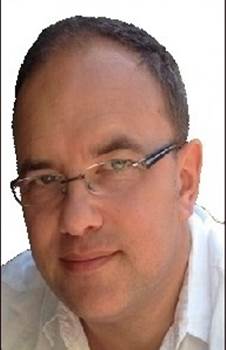|

|
Recent developments in low temperature very high pressure diamond anvil cell resistivity measurement
| Abstract: |
High pressure research spans area of science from biology, planetary research and geology to materials sciences and physics. Static (very) high pressures are usually achieved using the diamond anvil cell (DAC) technique. High pressure can drive matter in new structures and ground states through phase transitions, and perhaps the most eloquent example of this is the 26 elements that become superconducting under pressure. Nowadays many physical property measurements can be carried at high pressure using DAC. We will briefly review the most used DAC physical property measurement methods in condensed matter physics, from magnetic, thermodynamic, transport, optical Raman, to X-ray and neutron. DAC high pressure resistivity presents particular importance for condensed matter physics research. It is a great tool for the investigation of superconductors or materials that become superconducting with the application of pressure. Also the measurement of electrical resistivity as a function of temperature is a direct probe that can distinguish between insulating or metallic behavior. Still, there are many challenges with DAC resistivity measurements, from connecting the electrical leads to what is typically a very small sample to shear stress that can develop at high pressures and often breaks the metal leads.
|
| Speaker: |
Costel Rotundu - Stanford University |
| Speaker Bio: |
 Costel R. Rotundu is interested in synthesis and low temperature/high magnetic field/high pressure physical property measurements (X-ray, neutron, transport, thermodynamic and magnetic) of strongly correlated electron systems, with a focus on high temperature superconductors HTSC (cuprate and iron-based) and quantum spin liquids. He is synthesizing his own materials, mostly in crystal form, using primarily flux growth, Bridgman, optical floating zone, and high pressure high temperature piston cylinder and cubic multi anvil cell methods.
He completed his Ph.D. in condensed matter physics at University of Florida, with a thesis on heavy fermion superconductors, with half of the research done at National High Magnetic Field Laboratory. After graduation he was concomitant Research Associate at University of Maryland and Visiting Investigator at Carnegie Institution of Washington DC, conducting high pressure diamond anvil cell transport and X-ray measurements on the HTSC cuprate. He continued his research on HTSC on iron-pnictide compounds at Lawrence Berkeley National Laboratory with a focus on synthesis and study of the interplay between superconductivity and magnetism through transport, X-ray and neutron scattering measurements. He joined SIMES/SLAC in September 2014. Costel R. Rotundu is interested in synthesis and low temperature/high magnetic field/high pressure physical property measurements (X-ray, neutron, transport, thermodynamic and magnetic) of strongly correlated electron systems, with a focus on high temperature superconductors HTSC (cuprate and iron-based) and quantum spin liquids. He is synthesizing his own materials, mostly in crystal form, using primarily flux growth, Bridgman, optical floating zone, and high pressure high temperature piston cylinder and cubic multi anvil cell methods.
He completed his Ph.D. in condensed matter physics at University of Florida, with a thesis on heavy fermion superconductors, with half of the research done at National High Magnetic Field Laboratory. After graduation he was concomitant Research Associate at University of Maryland and Visiting Investigator at Carnegie Institution of Washington DC, conducting high pressure diamond anvil cell transport and X-ray measurements on the HTSC cuprate. He continued his research on HTSC on iron-pnictide compounds at Lawrence Berkeley National Laboratory with a focus on synthesis and study of the interplay between superconductivity and magnetism through transport, X-ray and neutron scattering measurements. He joined SIMES/SLAC in September 2014.
|
| Poster Link: |
Poster |
| Presentation: |
|
|
 Costel R. Rotundu is interested in synthesis and low temperature/high magnetic field/high pressure physical property measurements (X-ray, neutron, transport, thermodynamic and magnetic) of strongly correlated electron systems, with a focus on high temperature superconductors HTSC (cuprate and iron-based) and quantum spin liquids. He is synthesizing his own materials, mostly in crystal form, using primarily flux growth, Bridgman, optical floating zone, and high pressure high temperature piston cylinder and cubic multi anvil cell methods.
He completed his Ph.D. in condensed matter physics at University of Florida, with a thesis on heavy fermion superconductors, with half of the research done at National High Magnetic Field Laboratory. After graduation he was concomitant Research Associate at University of Maryland and Visiting Investigator at Carnegie Institution of Washington DC, conducting high pressure diamond anvil cell transport and X-ray measurements on the HTSC cuprate. He continued his research on HTSC on iron-pnictide compounds at Lawrence Berkeley National Laboratory with a focus on synthesis and study of the interplay between superconductivity and magnetism through transport, X-ray and neutron scattering measurements. He joined SIMES/SLAC in September 2014.
Costel R. Rotundu is interested in synthesis and low temperature/high magnetic field/high pressure physical property measurements (X-ray, neutron, transport, thermodynamic and magnetic) of strongly correlated electron systems, with a focus on high temperature superconductors HTSC (cuprate and iron-based) and quantum spin liquids. He is synthesizing his own materials, mostly in crystal form, using primarily flux growth, Bridgman, optical floating zone, and high pressure high temperature piston cylinder and cubic multi anvil cell methods.
He completed his Ph.D. in condensed matter physics at University of Florida, with a thesis on heavy fermion superconductors, with half of the research done at National High Magnetic Field Laboratory. After graduation he was concomitant Research Associate at University of Maryland and Visiting Investigator at Carnegie Institution of Washington DC, conducting high pressure diamond anvil cell transport and X-ray measurements on the HTSC cuprate. He continued his research on HTSC on iron-pnictide compounds at Lawrence Berkeley National Laboratory with a focus on synthesis and study of the interplay between superconductivity and magnetism through transport, X-ray and neutron scattering measurements. He joined SIMES/SLAC in September 2014.

